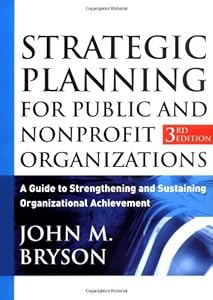The success of any organization, whether public or private, depends on the effective use of strategic planning. According to McNamara (2010), there are various organizational strategic planning models. Charting a strategic plan depends on the purpose, plan of action, culture of organization, and existing environmental conditions. Since organizations exist to serve their clients, there has to be a comprehensive, broad-based, and long-term strategy to serve as navigational aid. Almost all organizations have vision and mission statements.
McNamara (2010) argues that models one and two are vital to smaller businesses while model three is ideal for organizations looking toward implementing solid foundations and planning to expand their working strategies. Often, newly-founded non-profit organizations lack the expertise to look forward to new changes and challenges and that they simply stick to their initial plans at the time the organization was founded. Vision entails having the prudence to see further afield and make new additions that are deemed necessary. On the other hand, goals are list of items that have to be accomplished in a certain period of time despite projected handicaps. In model three, whatever is causing organizational stoppages will have to be lubricated and fine-tuned to enable freedom of movement and operation of personnel and machinery. What is known as scenario planning or model four may be incorporated with other models for successful strategic planning.
The nature of leadership style that exists in an organization should be taken into context when implementing strategic planning. Leadership styles will have to be adjusted to be acceptable to the planning process. Leadership styles come in various styles: transformational, transactional, and situational. One non-profit organization that I was involved with overseas had a transformational leader. One vital motivational factor in any organization is seeing there is continuous, sustained developmental growth. As long as the organization is on the right path in its firm commitment to production, internal and external forces will be assured that the future is bright. Growth and production are interrelated and will have to be watched carefully.
A second motivational factor is caring for the customers that make the organization’s operations possible. Targeting customers in the most applicable manner and giving them appealing products leads to satisfaction and trust. The third motivational factor is the management that is responsible for running the organization. Management will have to undergo training so they understand the operational procedures of the organization and how best to leap further from the current stagnation. According to Bryson (2004), vision, goals, and issues require developing objectives in various ways and places.
References
McNamara, C. (2010). Basic overview of various strategic planning models. Free Management Library. Retrieved from http://managementhelp.org/strategicplanning/models.htm
Bryson, J. (2004). Strategic planning for public and nonprofit organizations: A guide to
strengthening and sustaining organizational achievement (3rd ed.). San Francisco: Jossey-Bass.
السلام عليكم ورحمة الله وبركاته This Blog is Dedicated to the Preservation of Peace, Dignity, and Human Rights and the Dissemination of Knowledge.
Subscribe to:
Post Comments (Atom)
Battles of the Past
Introduction First and foremost, I would like to inform our ardent reader that I started writing this book on the 23rd of August, 2024. The...
-
Introduction First and foremost, I would like to inform our ardent reader that I started writing this book on the 23rd of August, 2024. The...
-
Qaad or Chat (pronounced cot), scientifically known as catha Edulis, is an evergreen perennial plant popular in East Africa and some parts...
-
Nin Insi ahaa ayaa wuxuu qabay labo haween ah oo mid ay aheyd Insi, ta kalena, Jinni. Haweeneeyda Inisiga ah waxay u dhashay saddex wiil, ...



No comments:
Post a Comment